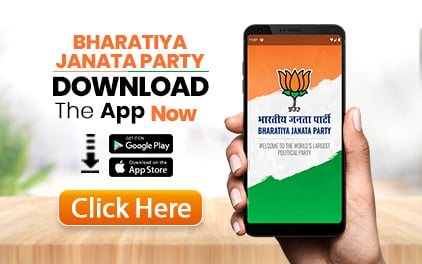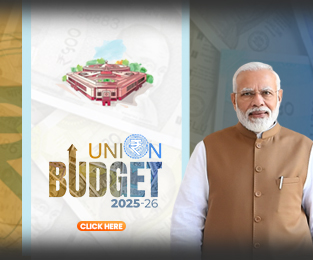
Benefits of the Aadhaar – where it stands today
- Arun Jaitley
The idea of having a Unique Identity Number (UID) for every citizen of India was conceived by Shri Nandan Nilekani during the UPA Government. Unquestionably, the credit goes to him for conceiving, initiating and implementing the idea. Aadhaar, however, was non-statutory. There was no law governing it. This triggered a serious legal challenge. The UPA itself was a divided house. While Shri Nandan Nilekani pushed hard, a senior Minister blocked it. The Prime Minister was indecisive. The enrolment continued, though at a very moderate pace.
The BJP, while in Opposition, had some reservations particularly with regard to non-citizens being enrolled. Immediately after the formation of the Government, a presentation was made to the Hon’ble Prime Minister by Shri Nandan Nilekani where I was also present.
At the conclusion of the presentation, the Prime Minister consulted others present and, decisive, as he is, immediately took the decision to go ahead with the idea of Aadhaar.
The legal hurdle
The UPA legislation was inadequate. It provided for the methodology by which the UID would be issued. It did not contain adequate safeguards on privacy. It did not mention for which purpose the UID would be used. The NDA Government re-examined the issue and the legislation was completely changed. The pith and substance of the new law was that Government spends a large part of the public resources in subsidising the poor. This subsidy became an indefinite amount which is given to an unidentified section of the people. There are many claimants who don’t exist. Several others are not entitled to it. There are several cases of duplication and thus the unique identity based on biometrics would eliminate these aberrations and relief would travel only to the intended. This was the thrust of the new law. After the new law was passed in Parliament it was challenged before the Supreme Court. The Supreme Court upheld the whole concept of unique identity and rejected the challenge that it violated the Right to Privacy. It held that Aadhaar meets the concept of constitutional trust, limited government and good governance and empowers marginalised section of society. It also introduced several safeguards to ensure that it is not misused. The Judgement of the Supreme Court added balance to the concept of AADHAAR.
The Performance
The Aadhaar (Targeted Delivery of Financial and other Subsidies, Benefits and Services) Bill, 2016, was passed by the Parliament on 16th March, 2016. It was notified on 26th March, 2016. Several other Sections of the Act which had initially not been notified, were notified on 12th September, 2016.
In the last 28 months over 122 crore Aadhaar numbers have been issued. 99% of the adult population of India above the age of 18 stands covered.
Many State support schemes, including some by the DBT mechanism have been linked to Aadhaar. 22.80 crore of PAHAL and Ujjwala beneficiaries are given cooking gas subsidies through DBT in their Aadhaar linked bank accounts . 58.24 crore ration card holders stand linked. 10.33 crore MGNREGA card holders get wage payment through DBT in their bank accounts. So do the 1.93 crore beneficiaries and other beneficiaries of the national social assistance programme. The Income Tax Department has already linked 21 crore PAN card holders with their Aadhaar numbers.
2579 crore authentications have been undertaken till date. Everyday 2.7 crore authentications are done. UIDAI has the capacity of 10 crore transactions to be authenticated per day.
The Government estimates that Rs. 90,000 crore have been saved in the last few years till March, 2018 by the use of the Aadhaar. Several duplicate beneficiaries, non-existent beneficiaries and fake beneficiaries have been eliminated. The Digital Dividend Report prepared by the World Bank estimates that India can save Rs. 77,000 crore every year by the use of Aadhaar. The savings through Aadhaar can fund three schemes of the size of Ayushman Bharat.
In most schemes the direct benefit transfer takes place to the beneficiaries’ 63.52 crore bank accounts that had been linked with the unique identity as on 15-12-2018. The total number of subsidy transactions through Aadhaar are almost about 425 crore. The total amount of subsidy transferred through Aadhaar now equals Rs. 169,868 crores. With the elimination of middlemen the benefits go directly to the bank accounts. This is a unique technology implemented only in India. The monies saved through Aadhaar is money fruitfully employed for the poor elsewhere.
Aadhaar is a game changer. Its evolution tells the same story. The UPA, because of its contradictions and indecision remained half-hearted about Aadhaar. Instead of taking credit for it, Congress lawyers challenged it in Court and appeared as the anti-technology, anti-Aadhaar faces. A decisive Prime Minister made it possible.
Two individuals deserve a special credit. Shri Nandan Nilekani, who started it and Dr. Ajay Bhushan Pandey, who subsequently provided it with the direction and expansion. He masterminded the Government strategy to repel the legal challenge.
To Write Comment Please Login



.gif)





